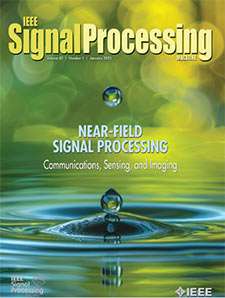Perspectives in Signal Processing for Communications and Networking: Spotlight on the IEEE Signal Processing Society Technical Committees
Top Reasons to Join SPS Today!
1. IEEE Signal Processing Magazine
2. Signal Processing Digital Library*
3. Inside Signal Processing Newsletter
4. SPS Resource Center
5. Career advancement & recognition
6. Discounts on conferences and publications
7. Professional networking
8. Communities for students, young professionals, and women
9. Volunteer opportunities
10. Coming soon! PDH/CEU credits
Click here to learn more.
Perspectives in Signal Processing for Communications and Networking: Spotlight on the IEEE Signal Processing Society Technical Committees
The Signal Processing for Communications and Networking Technical Committee (SPCOM-TC) is one of the 12 technical committees (TCs) in the IEEE Signal Processing Society (SPS). Our mandate covers all technical areas in communication engineering and network science, including:
information transmission and reception ■ channel modeling and estimation ■ source and channel coding ■ multicarrier and multiple-access communications ■ array signal processing ■ synchronization ■ localization...
as well as security; privacy; signal processing aspects of sensor and ad-hoc networks; cognitive radio systems; and distributed sensing, detection, estimation, and inference problems over the networks. The application areas range from terrestrial wireless systems to wireline, underwater, satellite, backscattering, and visible light communications, as well as on futuristic areas such as molecular, chemical, biological, and quantum communications. Our technical interests are tightly intertwined with that of the IEEE Communications Society and the IEEE Information Theory Society. We are committed to exploring the connections and cross-fertilization between these rapidly growing fields.
The SPCOM-TC organizes the IEEE International Workshop on Signal Pro-cessing Advances in Wireless Communications (SPAWC) each year in a unique all-poster format together with plenary and invited talks. The workshop has attracted increasing interest from the research community in recent years. The record of 268 attendees set at the last year’s workshop in Sapporo, Japan, was almost matched by this year’s SPAWC in Kalamata, Greece. In 2019, SPAWC will be held in Nice, France, and in 2020 in Atlanta, Georgia, United States
Many of the classical topics of the TC, such as optimization-based so - lutions for the physical layer of wireless networks, are still gathering interest and producing novel theoretical results. However, it is their applications to newer settings such as millimeter-wave (mmWave) communication in the highfrequency band; massive multiple-input, multiple-output (MIMO) systems; and cooperative cloud radio-access networks that are now inspiring the most significant innovations. Much of these recent research activities have been driven by the emerging fifth generation (5G) wireless cellular standardization process with enhanced mobile broadband at target peak rates beyond tens of gigabits per second as its first stated goal. Efforts in utilizing the significantly larger bandwidth in the mmWave frequency band, in taking advantage of the potentially hundreds of spatial dimensions brought by the massive MIMO systems while accounting for their hardware limitations, and in cooperative signal processing to mitigate and cancel the dominant intercell interference, are the keys for the successful realization of 5G.
The 5G evolution is much more than just enhancing the data rate. The future Internet of Things calls for new use cases involving machine-type communications, particularly for meeting the challenges of connecting the large number of sensors and actuators, and for providing ultra-reliability and low-latency communications. These new requirements are driven by myriad vertical markets for the wireless technology, from industrial automation to remote health care, robotics, and autonomous driving, extending further to, e.g., communications and control of unmanned aerial vehicles and high-speed Internet service provision via high altitude platforms. These exciting new applications will provide fertile ground for the development of new signal processing techniques.
Some of these new signal processing techniques will undoubtedly involve data-driven machine learning (ML), which is very much becoming a reality within the scope of the TC. The SPCOM area has traditionally been blessed with well-established generative models for point-to-point communication and with the existence of fundamental information theoretical limits for these models. Further, the TC has always placed high value on mathematically provable optimality of the methods that we develop. In spite of this, the adoption of data-driven methods is now moving beyond the initial skepticism and is very much on the way, and fast.
SPS Social Media
- IEEE SPS Facebook Page https://www.facebook.com/ieeeSPS
- IEEE SPS X Page https://x.com/IEEEsps
- IEEE SPS Instagram Page https://www.instagram.com/ieeesps/?hl=en
- IEEE SPS LinkedIn Page https://www.linkedin.com/company/ieeesps/
- IEEE SPS YouTube Channel https://www.youtube.com/ieeeSPS












